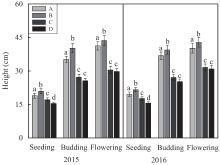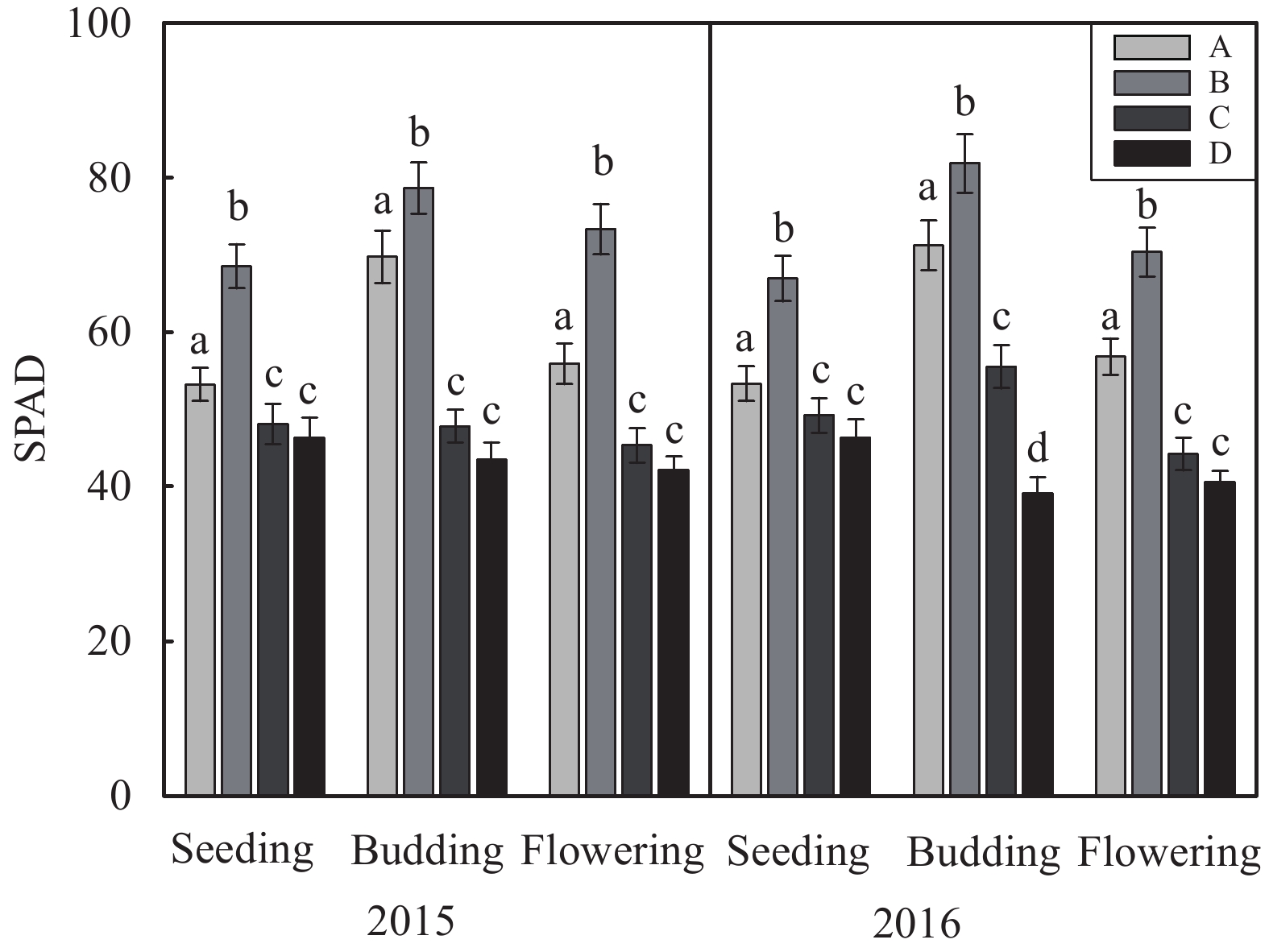Sciences in Cold and Arid Regions ›› 2018, Vol. 10 ›› Issue (5): 421–427.doi: 10.3724/SP.J.1226.2018.00421
Effect of slow-release iron fertilizer on iron-deficiency chlorosis, yield and quality of Lilium davidii var. unicolor in a two-year field experiment
Yang Qiu,ZhongKui Xie*( ),XinPing Wang,YaJun Wang,YuBao Zhang,YuHui He,WenMei Li,WenCong Lv
),XinPing Wang,YaJun Wang,YuBao Zhang,YuHui He,WenMei Li,WenCong Lv
- Northwest Institute of Eco-Environment and Resources, Chinese Academy of Sciences, Lanzhou, Gansu 730000, China
| 1 | AFNOR, 2004. Évaluation de la qualité des sols, volume 1: méthodes d'analyse chimique. La Plaine Saint-Denis Cedex: Association Française de Normalisation. |
| 2 |
Broadley MR, White PJ, Hammond JP, et al. Zinc in plants. New Phytologist 2007; 173: 4 677- 702.
doi: 10.1111/j.1469-8137.2007.01996.x |
| 3 | Christin H, Petty P, Ouertani K, et al. Influence of iron, potassium, magnesium, and nitrogen deficiencies on the growth and development of sorghum (Sorghum bicolor L.) and sunflower (Helianthus annuus L.) seedlings . Journal of Biotech Research 2009; 1: 3 64- 71. |
| 4 |
Goos RJ, Johnson B, Jackson G, et al. Greenhouse evaluation of controlled-release iron fertilizers for Soybean. Journal of Plant Nutrition 2004; 27: 1 43- 55.
doi: 10.1081/PLN-120027546 |
| 5 |
Jolley VD, Cook KA, Hansen NC, et al. Plant physiological responses for genotypic evaluation of iron efficiency in strategy I and strategy II plants-a review. Journal of Plant Nutrition 1996; 19: 8-9 1245- 1255.
doi: 10.1080/01904169609365195 |
| 6 | Kong XW, 1958. Message of Lanzhou-plant. Lanzhou: Gansu Republic Press, pp. 220–221. |
| 7 | Li GX Pharmacological effect of Lily (Liliumlancifolium). Journal of Chinese Medicinal Material 1990; 3: 31. |
| 8 | Liu JC, Fu LJ, 1999. Lilium Davidii Var. Unicolor and Its Cultivation. Lanzhou: Gansu Science Press, pp. 2–9. |
| 9 |
Liu WJ, Yu H, Ren LH, et al. Study on the relationship between nutritional ingredient and taste quality of sweetpotato varieties. Science and Technology of Food Industry 2014; 35: 12 91- 95.
doi: 10.13386/j.issn1002-0306.2014.12.010 |
| 10 |
Öborn I, Jansson G, Johnsson L A field study on the influence of soil pH on trace element levels in spring wheat (Triticum aestivum), potatoes (Solanum tuberosum) and carrots (Daucus carota) . Water, Air, and Soil Pollution 1995; 85: 2 835- 840.
doi: 10.1007/BF00476933 |
| 11 | Tian CL, Jie XL, Liu Y, et al. Effects of Se-Zn and fulvic acid combined application on nutrient component and amino acids formation of alfalfa. Acta Prataculturae Sinica 2014; 23: 2 66- 75. |
| 12 |
Walkley A, Black IA An examination of the degtjareff method for determining soil organic matter, and a proposed modification of the chromic acid titration method. Soil Sciences 1934; 37: 1 29- 38.
doi: 10.1097/00010694-193401000-00003 |
| 13 |
Wang F, Qiao L, Zhang QQ, et al. Amino acid composition and nutritional evaluation of mulberry leaves. Food Science 2015; 36: 1 225- 228.
doi: 10.7506/spkx1002-6630-201501043 |
| 14 | Yang H, Li YJ, Wang CL, et al. Correlation and regression analysis of taste evaluation and nutrient components in Squash. China Vegetables 2016; 11 25- 32. |
| 15 |
Yu Q, Qi WH, Yu Y, et al. Study on the healthcare function of Vitamin C. Heilongjiang Medicine Journal 2008; 21: 24- 26.
doi: 10.3969/j.issn.1006-2882.2008.06.014 |
| 16 |
Zhou QQ Development present situation and the countermeasures of Lilium davidii var. unicolor industry . Gansu Agricultural Sciences and Technology 2016; 1 64- 66.
doi: 10.3969/j.issn.1001-1463.2016.01.021 |
| 17 | Zhu GL, Bi J, Xia GL, et al. Effects of different slow-release fertilizers on cucumbers' yield, quality and nutrient use efficiency. Soil and Fertilizer Sciences in China 2013; 1 68- 73. |
| No related articles found! |




